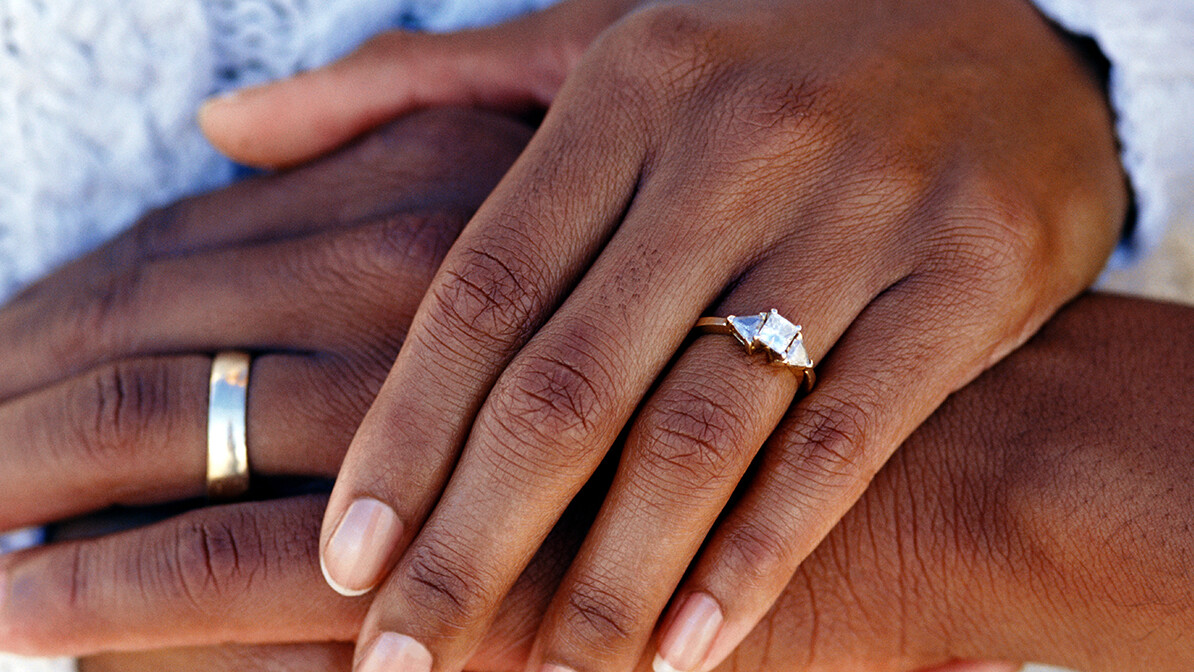- Home
- Relationships
- How to Enhance Your Relationship This Valentine’s Day

How to Enhance Your Relationship This Valentine’s Day
Looking for a simple way to enhance your Valentine’s Day?
SInce today is Valentine’s Day I wanted to talk about one of the most important aspects of a relationship and that is that real lovers appreciate the differences between themselves and their partners. Dr. John Gottman’s research shows that the way to have a resilient relationship is to turn toward each other.
Take a moment to reflect on the early days of your relationship. How did you meet? Who made the first move? What attracted you to each other early on?
I would guess that at least one piece of the puzzle was some of the ways your spouse was different from you.
Differences are part of what initially draws us to our partners. Have you ever noticed how a talkative, engaging extrovert could be attracted to a quiet, reflective introvert? How about someone cautious being drawn to someone filled with confidence?
While this is the case in so many relationships, these differences often become distractions down the road. Those cute nuances can move from appealing to appalling. Those same differences that first attracted you to one another can cause conflict, misunderstanding, and even alienation as time passes.
You and your spouse are two different people. You have diverse families of origin, varied family experiences. You may come from an intact family or a family impacted by divorce, death, or trauma.
You have different tastes and styles, and I am sure you may have a different set of expectations. Based on almost fifty years of marriage and countless hours in the chair as a therapist, I know you have different personality types and love languages.
Let’s look at a few examples. While you review these examples, be sure to check if any of these sound familiar. (I am grateful to my friends Steve and Cindy Wright at Marriage Missions for their colorful insights.)
Planners vs. Flexers:
Planners are individuals who love organization and structure. If you were to look into their cupboard, things would be organized because everything has a place. They generally prefer life to be neat and tidy. They use planners, keep lists, and can usually tell you what they will be doing a month from now. As a result, planners can sometimes be inflexible and control freaks.
Flexers, on the other hand, tend to be more malleable, able to adjust to the ebbs and flows of life quickly. Flexers tend to be more “in the moment,” flexible, and laid back. They take life as it comes. Loose ends are not deal breakers because they believe things have a way of working themselves out. Unfortunately, planners may sometimes see this behavior as lazy and irresponsible.
This can prove tricky, particularly when a planner and a fixer are married.
Big Picture vs. In the Weeds:
Big picture people have a general focus on the prize. They tend to think about moving in a direction that accomplishes the mission. They are doers.
People who are “in the weeds” are the detailers of life, and Lord knows big picture people need folks who love the attention to detail.
Big picture people tend to be abstract thinkers, likely to see from a bird’s eye view. People who are more attentive to details tend to see the nuances of a given scenario. Big picture people paint a great image of what they want to accomplish. However, without the perspective of the detailers, they may miss the nitty-gritty of how to make the journey. It is essential to understand that both views are crucial if a couple is matched.
Risk Takers vs. Risk Averse:
One author cleverly divides these two styles into leapers and lookers. Leapers get an emotional boost when they observe an opportunity. They want to grab the opportunity while it is hot. As a rule of thumb, they come across as fearless and maybe even somewhat reckless as they feel impervious to danger.
Those who are more risk-averse tend to be more observant and careful. They like to check out the facts, gather the data, analyze the data, and take their time to look at multiple options before deciding.
As a couple, the risk-taker can get bored and seek new and unique experiences. Those who are more reserved and less likely to take risks will find much comfort in the familiar, routine, and predictable. In marriage, the leaper would be advised to seek the looker’s counsel, insight, and plans. Likewise, the looker needs to be stretched by the leaper. Which would tend to keep the relationship exciting.
Extrovert vs. Introverts:
Extroverts love the excitement and connectivity of the crowd. They are expressive and responsive and frequently are energized when they are around others. On the opposite end of the spectrum, introverts would rather have a quiet time either by themselves or with a few close friends. Extroverts tend to be in the moment, whereas introverts tend to be reserved, thinking through options before talking.
Authors Shaunti & Jeff Feldhanm’s For Men Only and For Women Only are two books I ask all the couples I work with to read. They provide the reader with a look into the differences between men and women. Here are just a few of their insights.
Different areas of insecurity can lead to varying emotional needs.
Men always question how others view them, so they are filled up by knowing their wives notice what they do. Saying things like “thank you” or “good job” to your man in the little things is almost the same as you receiving a dozen roses and chocolate. When you verbally express gratitude to your husband, you make him feel competent, needed, and respected, which are his core needs.
Now to flip the coin. Women need to be reassured of their spouse’s love every day. So many times, guys are stunned to learn that 82 percent of women are deeply pleased by simple things like holding her hand, shooting her a text to let her know you love her or are thinking about her.
Another huge difference is our communication styles.
Neuroscience is blazing many new trails into understanding how unique and complex our brains are and that men’s and women’s brains are structurally different. One of the interesting findings is that women’s brains are wired to problem-solve externally. That could be the main reason women like to talk. For example, it seems, in sitting with each other and sharing, they process solutions. On the other hand, men’s brains are more structured to problem-solve through internal processing, which could be one reason most men are challenged to find a “talking solution.”
How does this work itself out practically? First, most of us guys need to pull away from emotional situations to figure out what we are rethinking and feeling to discuss it later.
Women generally tend to process emotions, especially intense emotions, by talking. A woman doesn’t want a quick, uninvited response or proposed solution because that would short circuit her processing. Men, we would do well to learn how to sit with her and draw out those feelings.
Another big difference that we need to appreciate is how men and women express themselves sexually.
Learning to appreciate different styles for intimacy in the bedroom and other places can significantly enhance a unique sense of closeness. Special Note: There is probably no other area in a marriage that can present as many opportunities for misunderstanding as those intimate moments.
Ladies, contrary to popular opinion, sex is not a physical need that we guys have; it’s primarily an emotional one. Think about that. The idea of intimacy for men as an emotional one has almost been erased from the map. A husband needs to know his wife deeply desires him. This type of affirmation gives men a deep sense of well-being that flows into every other area of their lives.
However, a husband often can avoid these painful misunderstandings by engaging his wife in ways that she needs instead of expecting a response he thinks she should have. Testosterone gives most men the “microwave response,” the ability to be ready in a short time. Women tend to be more like a “crockpot.”
Men, she needs to feel close to you outside of the bedroom, so letting her know what you’re thinking ahead of time and inviting her input let’s her know you value her, gives her space to process if she needs to, helps manage expectations, and allows both of you to enjoy the anticipation.
In all fairness, these are generalizations. The key is to appreciate your differences and adjust accordingly and intentionally. As my copy editor, Kaley says, “Strangers make bad lovers, no matter what the tv shows tell you.”
Learning to value and work with your differences will provide an extreme advantage in your relationship as you choose to grow as a couple, experiencing intimacy in multiple areas.
I hope this post will help you understand your differences and celebrate them as a couple.
Trending Now
Sign up today for your Inspiration Today Daily Newsletter
Supercharge your faith and ignite your spirit. Find hope in God’s word. Receive your Inspiration Today newsletter now!
John Thurman
John Thurman M.Div., M.A., is a Licensed Mental health Professional, Author, Speaker, and Certified Corporate Crisis Response Specialist who lives with his wife Angie in Albuquerque, NM. In addition, he is the Director of Covert Mercy Inc., a ministry that provides Stress Management Consulting and Training for ministry leaders and missionaries serving in the North Africa Middle East area. Learn more at johnthurman.net
Related Articles
June 27, 2025
Who Is My Neighbor: Bridging the Gap Between Emancipation and Equality (Part 2)
In “Who Is My Neighbor: Bridging the Gap,” we ask what it means to truly see, hear, and love our…
June 24, 2025
It’s All About Love
This excerpt explores the beauty of God’s design for marriage, showing how Scripture reflects His…
June 10, 2025
Freedom in Forgiveness
This excerpt explores the healing process and power of forgiveness in marriage, emphasizing how it…
June 2, 2025
The Mystery of Marriage
This excerpt explores the mystery of marriage as a divine reflection of Christ’s love for the…
Next Steps To Strengthen Your Walk
Inspiration Today Newsletter
Supercharge your faith and ignite your spirit. Find hope in God’s word. Receive your Inspiration Today newsletter now!
Christian Articles
Find articles to strengthen your walk and grow your faith. We have a wide range of topics and authors for you.
Submit A Prayer Request
We are here for you. Simply click on the button below to reach us by form, email or phone. Together we will lift our hearts and voices with you in prayer.





